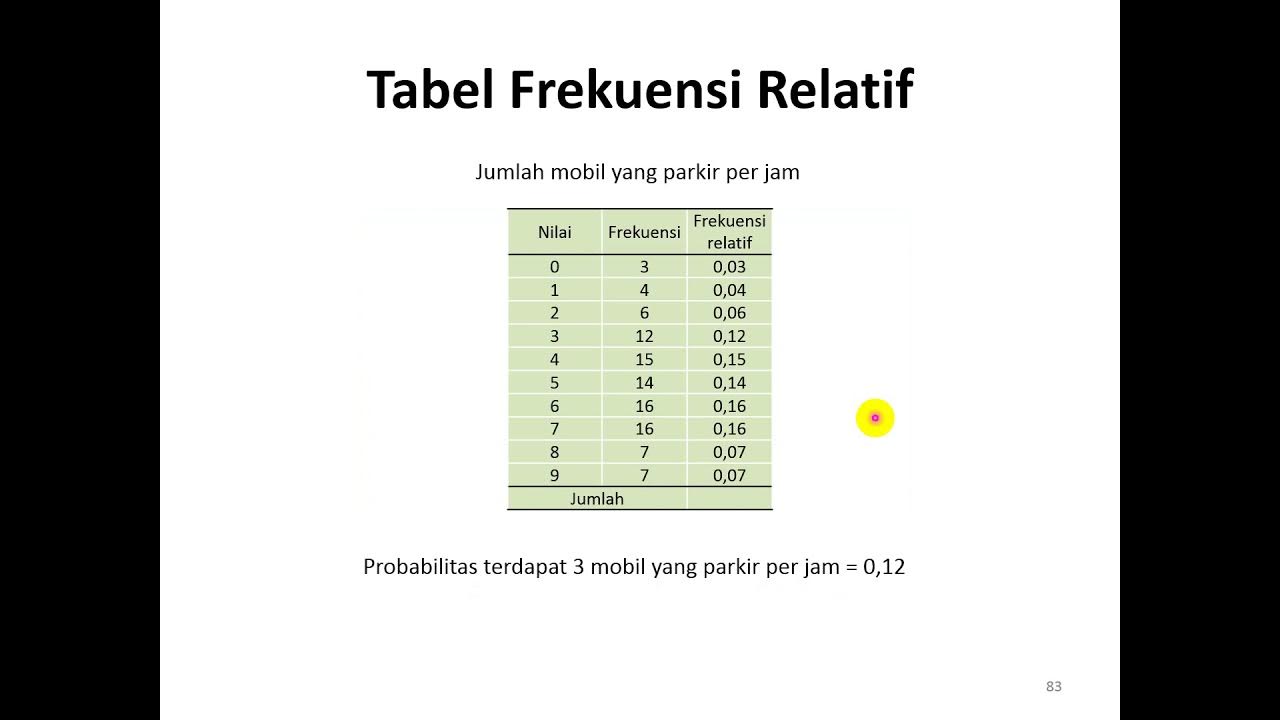What is Statistics (and why do we study it?)
Summary
TLDRThis video explores the role of statistics in understanding and quantifying uncertainty in various fields. It emphasizes how statistics helps us make informed decisions by analyzing data derived from uncertain observations. From healthcare and business to social sciences and artificial intelligence, statistical methods are crucial for drawing insights from data. The video explains key concepts like data, variables, observations, and the difference between univariate and multivariate data, highlighting how statistics bridges the gap between raw information and knowledge, helping to answer scientific questions and solve real-world problems.
Takeaways
- 😀 Statistics is the study of uncertainty, aiming to quantify, understand, and navigate the uncertainty inherent in both scientific inquiry and everyday life.
- 😀 Data is central to statistics. It is gathered from observations, whether through scientific experiments or everyday experiences, and is inherently uncertain.
- 😀 Statistics provides tools to make sense of data, helping us draw conclusions and make informed decisions, despite the uncertainty of the data.
- 😀 Across diverse fields like healthcare, epidemiology, business, finance, social sciences, and the natural sciences, statistical methods are used to make decisions based on data.
- 😀 In healthcare, statistical analysis is essential in clinical trials to determine the effectiveness of treatments and interventions.
- 😀 Epidemiological modeling uses statistics to predict how diseases spread and assess public health strategies, especially in the context of global pandemics.
- 😀 In business, market research relies on statistics to predict customer behavior, understand market trends, and guide business decisions.
- 😀 Finance involves uncertainty in stock markets and investment choices, and statistics help make sense of market fluctuations and assess risks.
- 😀 Social sciences use statistics to analyze data from surveys and polls, helping understand human behavior, opinions, and societal trends.
- 😀 In the natural sciences, statistics is used to analyze experimental data, helping scientists test hypotheses and develop scientific theories.
- 😀 Artificial intelligence (AI) and machine learning models use statistical techniques to process vast amounts of data, enabling predictions and insights from uncertain data.
Q & A
What is the core idea behind statistics as discussed in the script?
-The core idea behind statistics is to confront uncertainty. Statistics helps quantify, understand, and make informed decisions based on the uncertainty inherent in the world around us.
Why is uncertainty important in statistics?
-Uncertainty is important because it's a constant factor in both scientific inquiry and everyday life. Statistics aims to provide tools to handle this uncertainty and help us make sense of the data we observe.
How does statistics help in making informed decisions?
-Statistics helps by analyzing data collected from uncertain processes, allowing us to draw conclusions, make predictions, and base decisions on evidence rather than guesswork.
What role does data play in statistical analysis?
-Data is central to statistical analysis. It's the raw material from which we derive insights. Through data, we observe and quantify uncertainty, making it possible to test hypotheses, validate theories, and make informed decisions.
Can you explain what variables are in the context of statistics?
-In statistics, variables are characteristics or attributes that can vary across individuals or observations in a data set. These could be anything from age and height to opinions or experimental conditions.
What is the difference between quantitative and qualitative variables?
-Quantitative variables are expressed in numerical terms, such as height, age, or temperature. Qualitative variables, on the other hand, are non-numeric and often describe categories or qualities, such as favorite color or political affiliation.
What is the significance of observation in statistical data collection?
-An observation refers to a single data point, which may consist of one or more variables. Observations are the fundamental units in a data set and serve as the basis for statistical analysis and interpretation.
What is the distinction between univariate and multivariate data?
-Univariate data involves a single variable, while multivariate data involves multiple variables. Most real-world data sets are multivariate, but univariate data can still provide valuable insights and serve as a foundation for more complex analyses.
How does statistics relate to various fields like healthcare, business, and social sciences?
-In fields like healthcare, statistics is used to evaluate treatments or interventions. In business, it helps with market research and consumer behavior. In social sciences, statistics aids in understanding human behavior, polling, and demographic analysis, all of which involve uncertainty.
How does artificial intelligence use statistical methods, as discussed in the script?
-Artificial intelligence relies on statistical methods to analyze large amounts of data, identify patterns, and make predictions or decisions. For example, AI systems use statistical techniques to understand uncertain data and improve their performance over time.
Outlines

This section is available to paid users only. Please upgrade to access this part.
Upgrade NowMindmap

This section is available to paid users only. Please upgrade to access this part.
Upgrade NowKeywords

This section is available to paid users only. Please upgrade to access this part.
Upgrade NowHighlights

This section is available to paid users only. Please upgrade to access this part.
Upgrade NowTranscripts

This section is available to paid users only. Please upgrade to access this part.
Upgrade NowBrowse More Related Video

Application of Statistics In Daily Life | Use and Importance Of Statistics | Assignment Desk

Peter Donnelly: How stats fool juries

TI2102 - Teori Probabilitas - Minggu 01e - Peran probabilitas dalam teknik industri

Wilson Morgado - 1º Congresso Online "A Estatística e suas possibilidades de atuação profissional"

Statisticians in Other Fields

Mitä data-analytiikka on?
5.0 / 5 (0 votes)